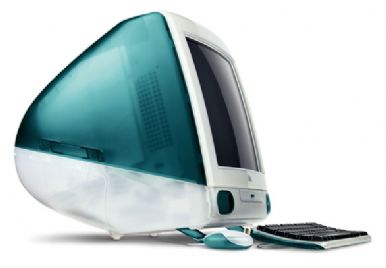
"MACOS" redirects here. For the American humanities teaching program, see Man: A Course of Study.
Mac OS X v10.5- the latest release of Mac OS X.
Mac OS 9- the last release of the classic Mac OS.
Mac OS logoMac OS is the trademarked name for a series of graphical user interface-based operating systems developed by Apple Inc. (formerly Apple Computer, Inc.) for their Macintosh line of computer systems. The Macintosh user experience is credited with popularizing the graphical user interface. The original form of what Apple would later name the "Mac OS" was the integral and unnamed system software first introduced in 1984 with the original Macintosh, usually referred to simply as the System software. It was a trimmed-down version of the operating system underpinning Apple's earlier Lisa product.
Apple deliberately downplayed the existence of the operating system in the early years of the Macintosh to help make the machine appear more user-friendly and to distance it from other operating systems such as MS-DOS, which was more arcane and technically challenging. Much of this early system software was held in ROM, with updates typically provided free of charge by Apple dealers on floppy disk. As increasing disk storage capacity and performance gradually eliminated the need for fixing much of an advanced GUI operating system in ROM, Apple explored cloning while positioning major operating system upgrades as separate revenue-generating products, first with System 7 and System 7.5, then with Mac OS 7.6 in 1997.
Versions
 The early Macintosh operating system initially consisted of two pieces of software, called "System" and "Finder", each with its own version number.[1] System 7.5 was the first to include the Mac OS logo (a variation on the original Happy Mac startup icon), and Mac OS 7.6 was the first to be named "Mac OS" (to ensure that users would still identify it with Apple, even when used in "clones" from other companies).
The early Macintosh operating system initially consisted of two pieces of software, called "System" and "Finder", each with its own version number.[1] System 7.5 was the first to include the Mac OS logo (a variation on the original Happy Mac startup icon), and Mac OS 7.6 was the first to be named "Mac OS" (to ensure that users would still identify it with Apple, even when used in "clones" from other companies).Until the advent of the later PowerPC G3-based systems, significant parts of the system were stored in physical ROM on the motherboard. The initial purpose of this was to avoid using up the limited storage of floppy disks on system support, given that the early Macs had no hard disk. (Only one model of Mac was ever actually bootable using the ROM alone, the 1991 Mac Classic model.) This architecture also allowed for a completely graphical OS interface at the lowest level without the need for a text-only console or command-line mode. A fatal software error, or even a low-level hardware error discovered during system startup (such as finding no functioning disk drives), was communicated to the user graphically using some combination of icons, alert box windows, buttons, a mouse pointer, and the distinctive Chicago bitmap font. Mac OS depended on this core system software in ROM on the motherboard, a fact that later helped to ensure that only Apple computers or licensed clones (with the copyright-protected ROMs from Apple) could run Mac OS.
The Mac OS can be divided into two families:
The Mac OS Classic family, which was based on Apple's own code
The Mac OS X operating system, derived from UNIX.


